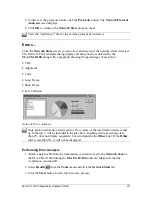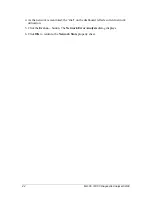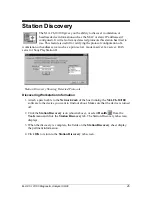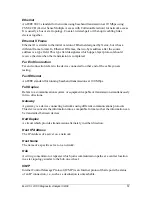
M.A.Ch.10/100 Diagnostic Analyzer 09/00
55
Router
A
router
receives transmissions and directs them to their correct destinations by the most
efficient route. It also can enable devices on different LANs to communicate.
Server IP
The IP address for a particular server.
Shield
An insulating material used with coax or twisted-pair cable to reduce electrical
interference.
Shielded Twisted Pair (STP)
Shield Twisted Pair (STP) cabling is covered with metal-backed mylar, plastic or PVC to
protect transmissions from noise. It consists of two pair cabling, with both pairs having
its own individual shield, in addition to an overall shield surrounding both pairs. STP is
most familiar to LAN users as the heavy black IBM Type 1 cabling found in token ring
networks.
SNMP
Simple Network Management Protocol (SNMP) is the network management protocol of
TCP/IP.
Subnet
A
subnet
is essentially a network that is a portion of a larger network. In order to be
called a
subnet
, all devices must have the same IP address. See the section on
Subnet
Design Calculator
for more information.
Subnet Mask
The subnet mask is a 32-bit number that is divided into network IDs and Station IDs. All
workstations on the same LAN should have the same network ID, but different Stations
IDs. See the section on
Subnet Design Calculator
for more information.
Subnet-number
The segment of the IP address that identifies a subnet.
TCP
Transmission Control Protocol (TCP) specifies how data messages are divided into
packets to be sent and received by IP (Internet Protocol). It also determines how these
packets are reassembled and verified as complete
TCP/IP
Transmission Control Protocol/Internet Protocol (TCP/IP) was developed as a standard
by the Department of Defense for communications between computers.


































